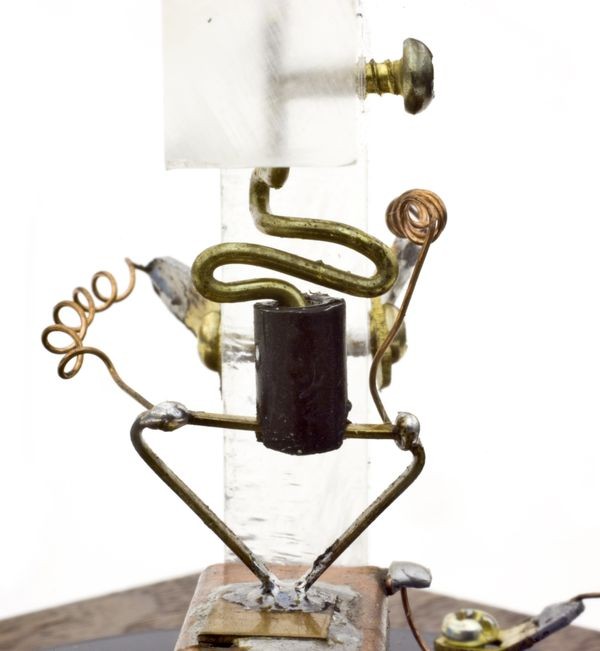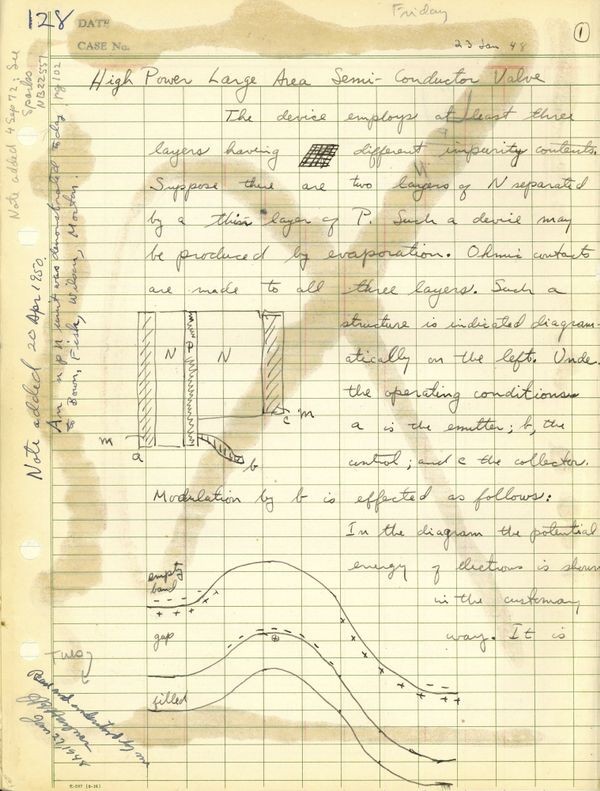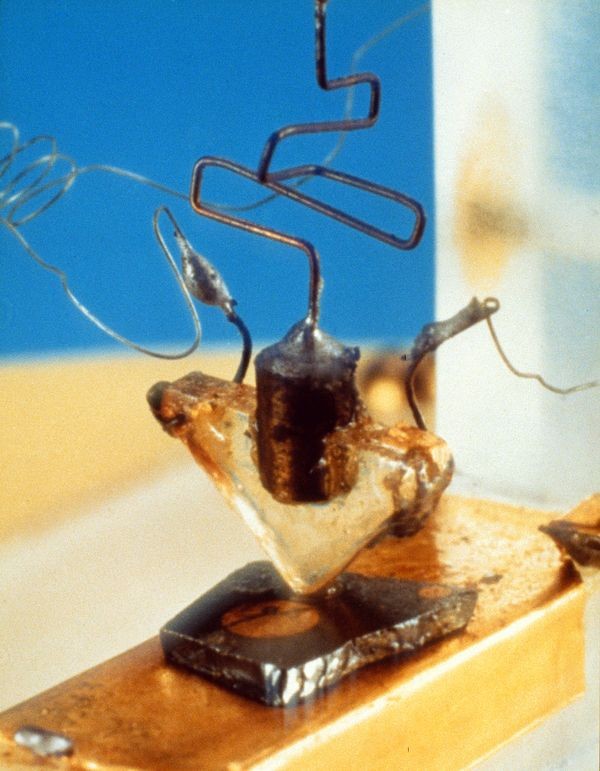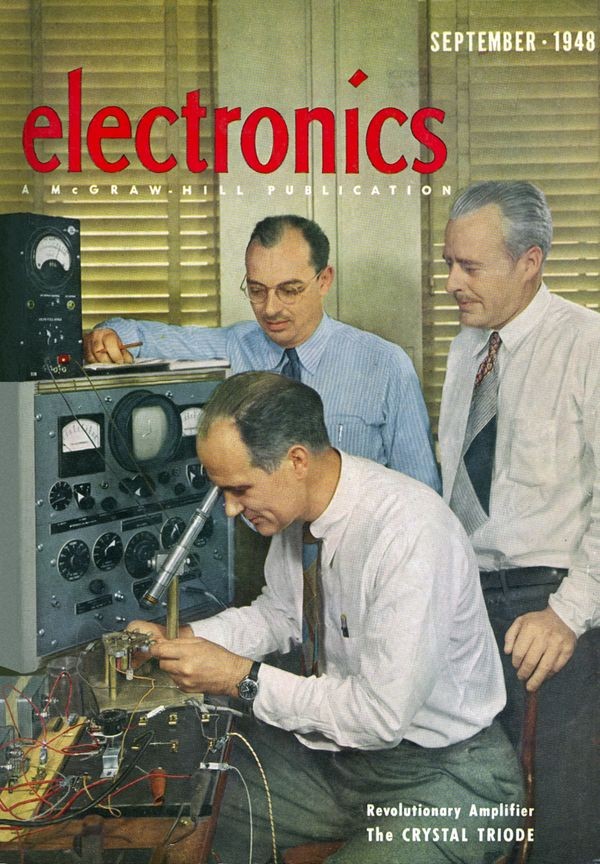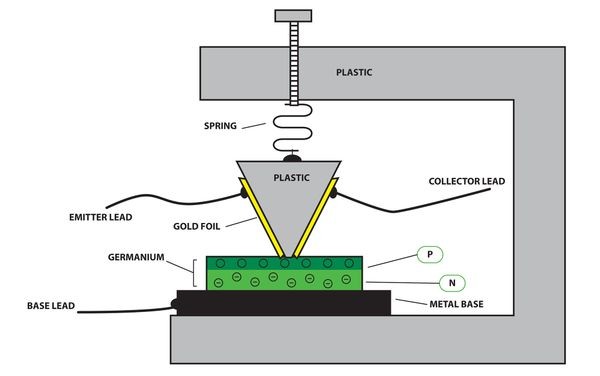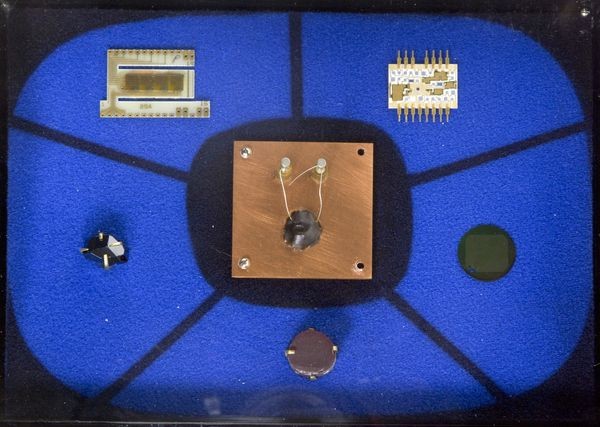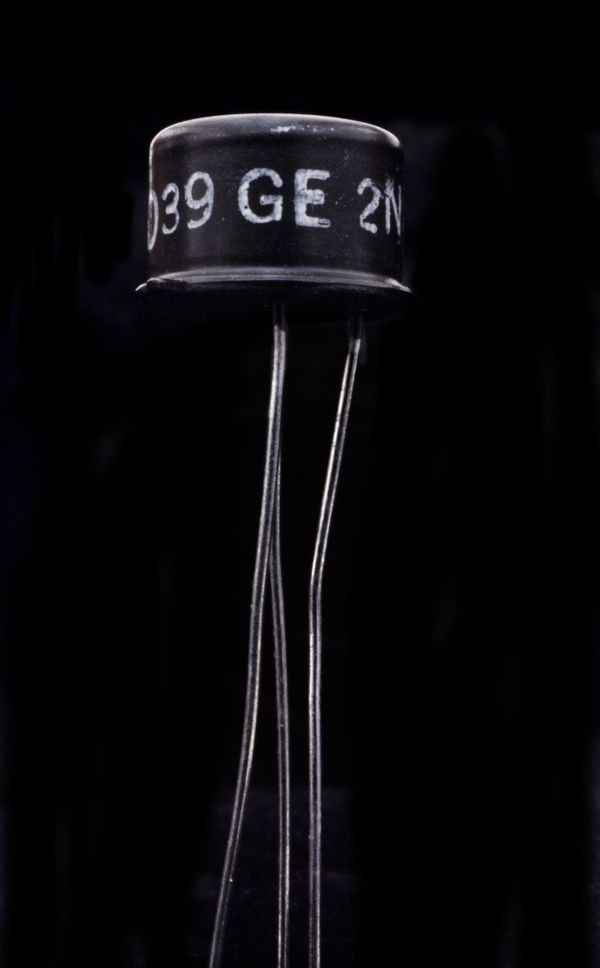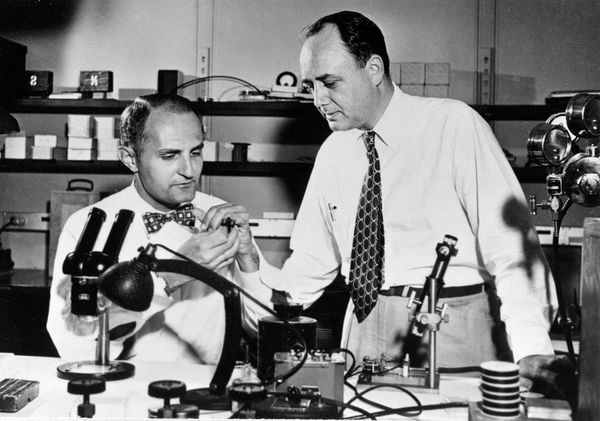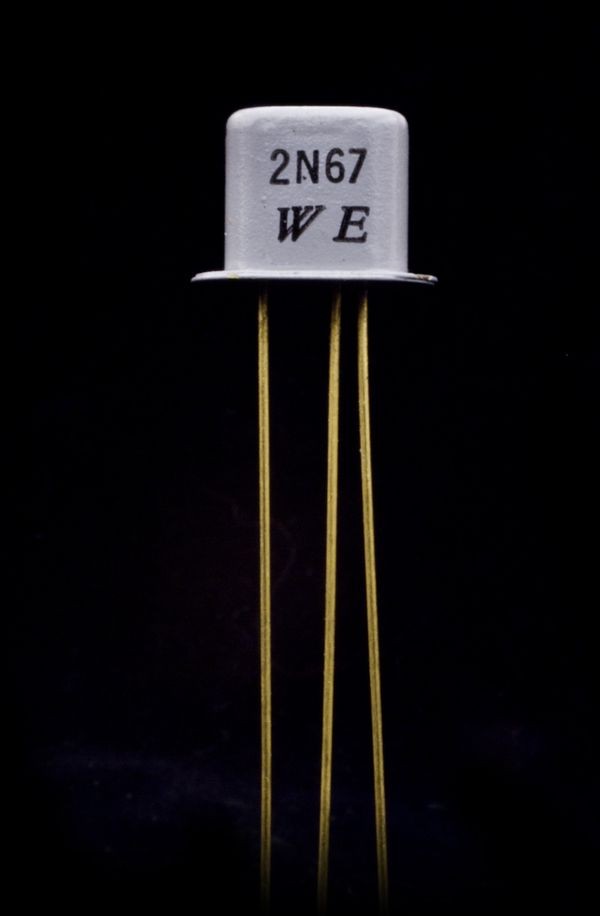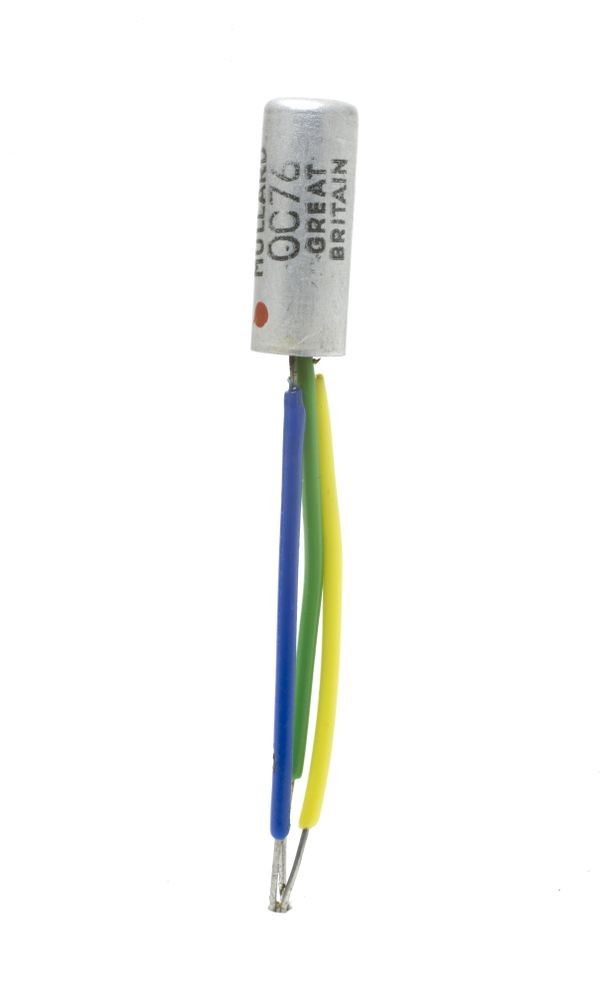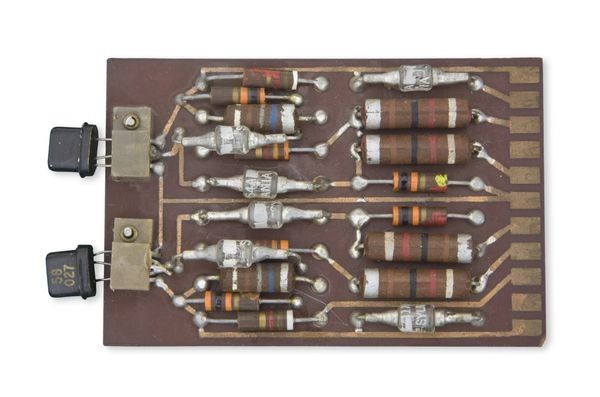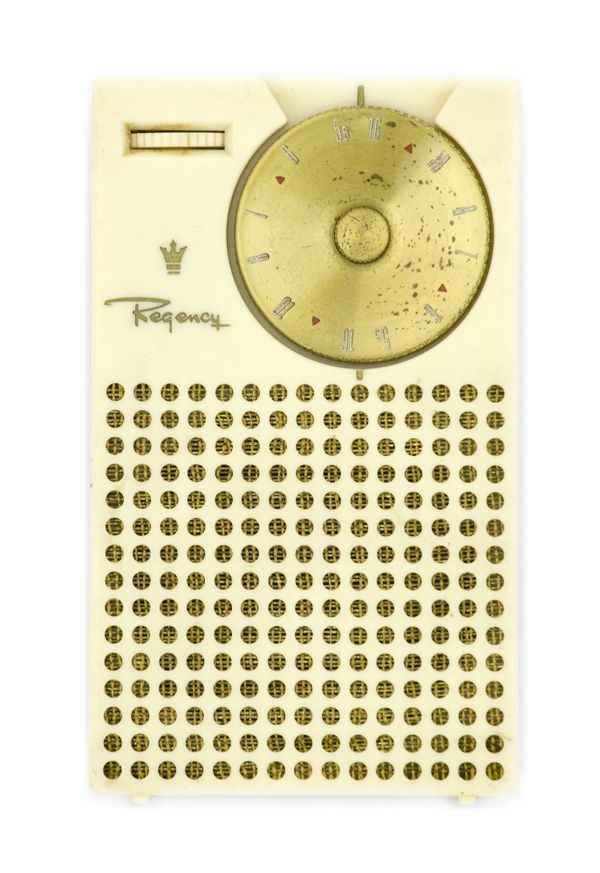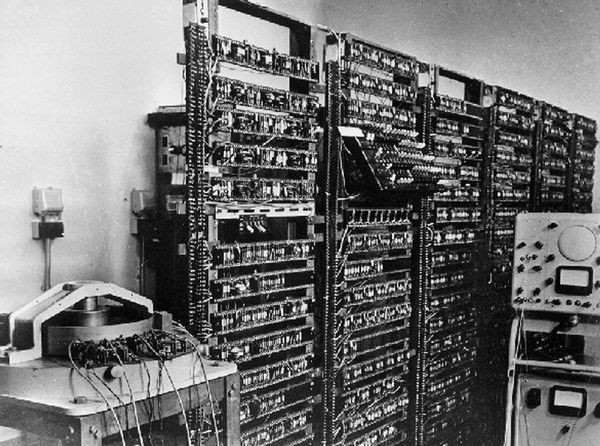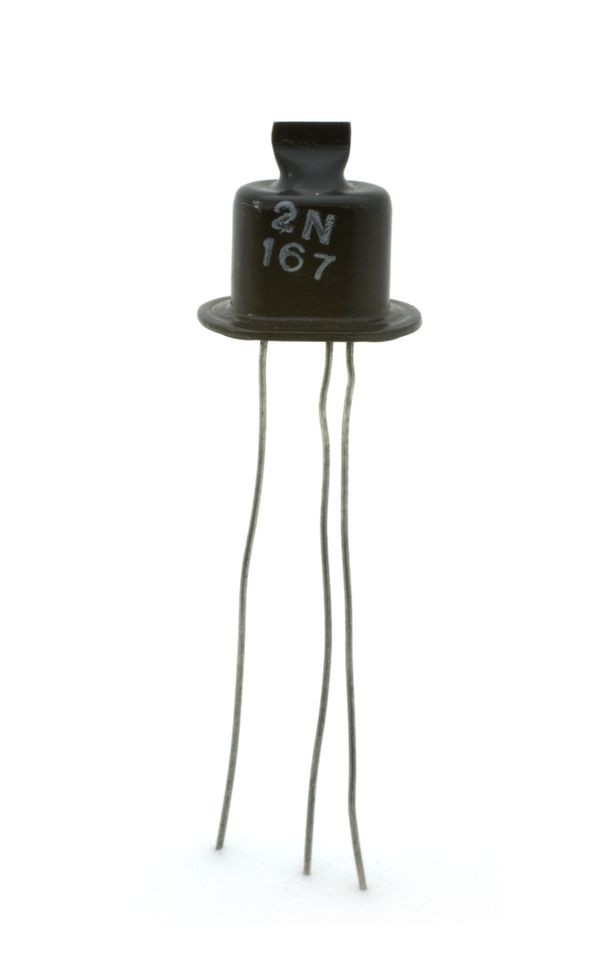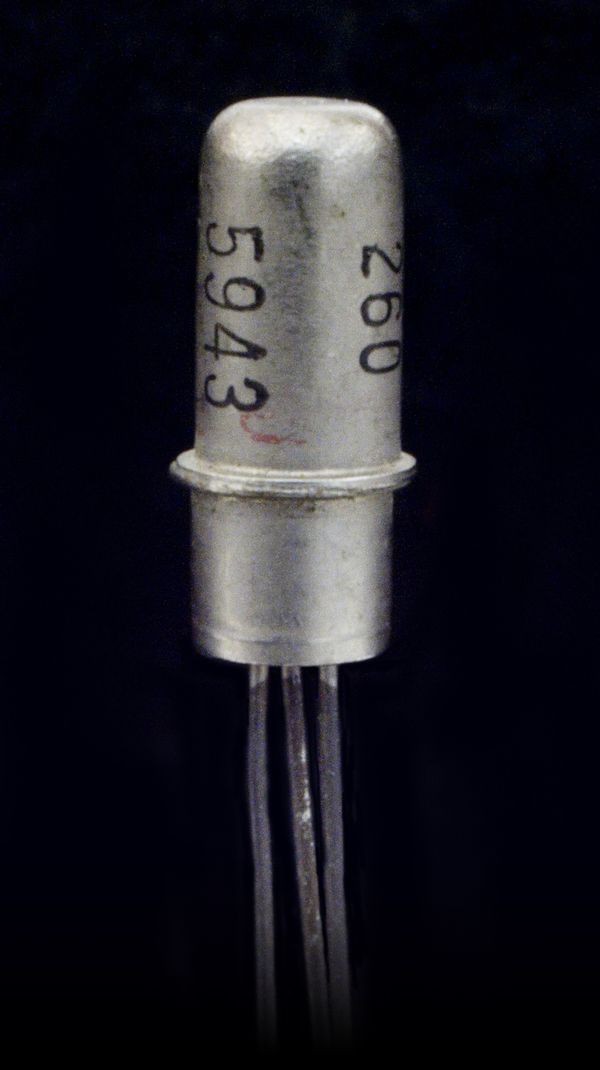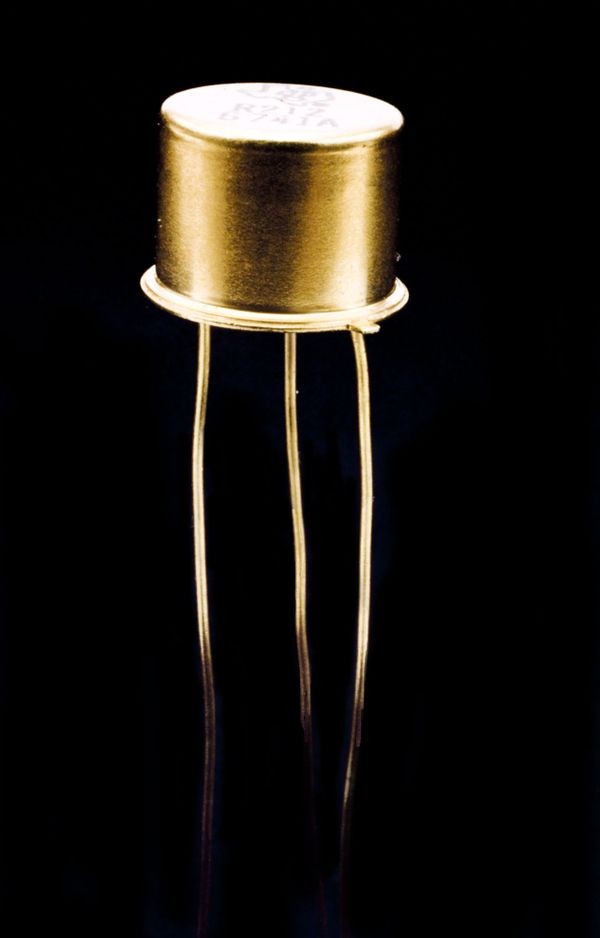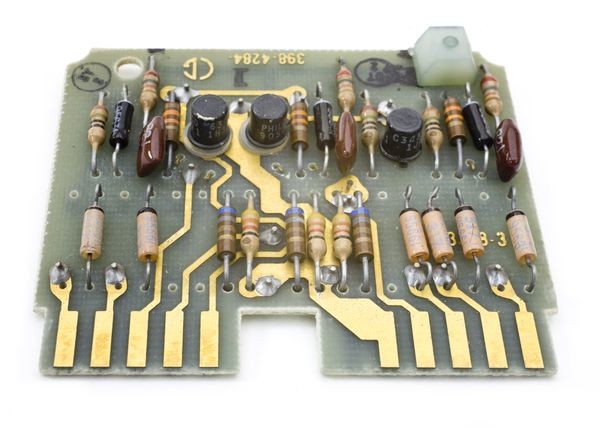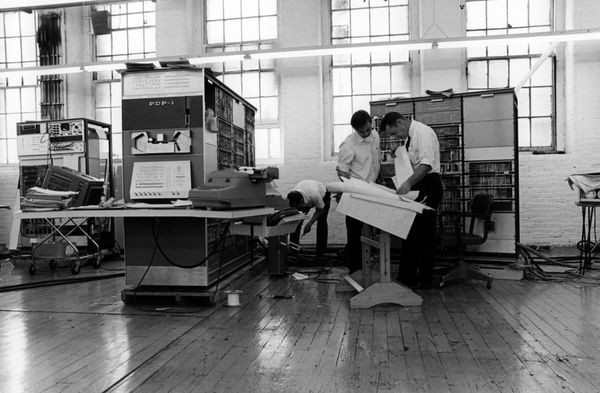Inventing the Transistor
First transistor (replica), Bell Labs, 1947
The first transistor used two closely spaced gold contacts pressed onto the surface of a slab of high-purity germanium.
Inventing the Transistor
Scientists in the 1920s proposed building amplifiers from semiconductors. But they didn’t understand the materials well enough to actually do it. In 1939, William Shockley at AT&T’s Bell Labs revived the idea as a way to replace vacuum tubes.
Under Shockley’s direction, John Bardeen and Walter Brattain demonstrated in 1947 the first semiconductor amplifier: the point-contact transistor, with two metal points in contact with a sliver of germanium. In 1948, Shockley invented the more robust junction transistor, built in 1951.
The three shared the 1956 Nobel Prize in Physics for their inventions.
The first transistor
A plastic wedge secured two gold contacts to the first transistor’s germanium surface. Voltage applied to one contact modulated the current flowing through the other, amplifying the input signal up to 100 times.
View Artifact DetailBardeen & Brattain at Bell Telephone Laboratories
John Bardeen, Walter Brattain, and William Shockley (seated) posed for the press in the laboratory where they built the first transistor. Electronics magazine called the device a "Crystal Triode."
View Artifact DetailHow Bardeen and Brattain's Transistor Worked
Bardeen and Brattain’s transistor consisted of a sliver of germanium with two closely spaced gold point contacts held in place by a plastic wedge. They selected germanium material that had been treated to contain an excess of electrons, called N-type. When they caused an electric current to flow through one contact (called the emitter) it induced a scarcity of electrons in a thin layer (changing it locally to P-type) near the germanium surface. This changed the amount of current that could flow through the collector contact. A small change in the current through the emitter caused a larger change in the collector current. They had created a current amplifier.
Morgan Sparks Commemorative Phone Box
Morgan Sparks hand-built the first working unit of Shockley’s junction transistor. The display at the top of this box includes a replica of that first device (center), plus other artifacts related to Sparks’s career at Bell Labs.
View Artifact DetailType 2N404 Transistor, General Electric, 1957
A PNP alloy junction transistor, popular as a computer switch.
View Artifact DetailMorgan Sparks and Gordon Teal
Gordon Teal and Morgan Sparks fabricated William Shockley’s first junction transistor by dropping tiny pellets of impurities into molten germanium during the crystal-growing process.
View Artifact DetailMa Bell’s Cookbook
Bell Telephone Laboratories prepared The Transistor: Selected Reference Material on Characteristics and Applications, the first compendium of information on the transistor and its applications, for its patent licensees.
View Artifact DetailType 154 Transistor, IBM, 1959
An NPN double-diffused mesa transistor used in the IBM Stretch and System 700 computers.
View Artifact DetailTransistors Take Off
AT&T, which had invented the transistor, licensed the technology in 1952. It hoped to benefit from others’ improvements.
Transistors swiftly left the lab and entered the marketplace. Although costlier than vacuum tubes, they were ideal when portability and battery operation were important. The 1952 Sonotone hearing aid was America’s first transistorized consumer product. AT&T also used transistor amplifiers in its long distance telephone system. They soon appeared as switches, beginning with an experimental computer at Manchester University in 1953.
As prices dropped, uses multiplied. By 1960, most new computers were transistorized.
Improved Transistor Designs
Licensees of Bell Labs transistor technology developed alternative manufacturing techniques to improve the performance and reduce the cost of transistors. The germanium devices shown here were optimized for particular applications.
Type 2N67 transistor, Western Electric, 1954
A point contact transistor for rugged airborne systems.
View Artifact DetailType OC76 Transistor, Mullard Ltd., circa 1958
A PNP alloy junction transistor, a popular European general purpose switch.
View Artifact DetailExperimental Logic Card, IBM, 1953
This logic card with germanium diodes and alloy-junction transistors from the IBM 604 calculator was later adopted as an IBM standard format.
View Artifact DetailRegency Model TR-1 Transistor Radio, 1954
The Regency TR-1 with four TI germanium transistors sold over 100,000 units and introduced the word “transistor” to the public.
View Artifact DetailThe "Manchester TC" transistor computer
Working under Tom Kilburn at England’s Manchester University, Richard Grimsdale and Douglas Webb demonstrated a prototype transistorized computer on November 16, 1953. The 48-bit machine used 92 point-contact transistors and 550 diodes.
View Artifact DetailType 2N167 Transistor, General Electric, 1954
Computer switch used by CDC (NPN grown junction).
View Artifact DetailType 2N240 Transistor, Philco Corporation, 1955
A PNP surface barrier transistor for high speed logic.
View Artifact DetailType R212 Transistor, Texas Instruments, circa 1958
A PNP alloy junction transistor used in the Polaris missile guidance computer.
View Artifact Detail212 Logic Card, Philco Corporation, 1960
This plug-in logic card from the Philco TRANSAC 2000 Model 212 computer used three germanium PNP surface barrier transistors.
View Artifact DetailPDP-1 computer
The PDP-1, DEC’s first computer, used 2,700 transistors and 3,000 diodes mounted on the company’s existing line of commercial building block modules.
View Artifact DetailRelated Content
Learn more about the work of these pioneers and applications for transistors
John Bardeen & Walter Brattain demonstrate the first transistor
William Shockley conceives a better transistor
Morgan Sparks and Gordon Teal build Shockley’s transistor
Bell Labs encourages transistor research
Hearing aids and radios—the first transistorized consumer products
Transistors enable smaller and lower-power computer systems
